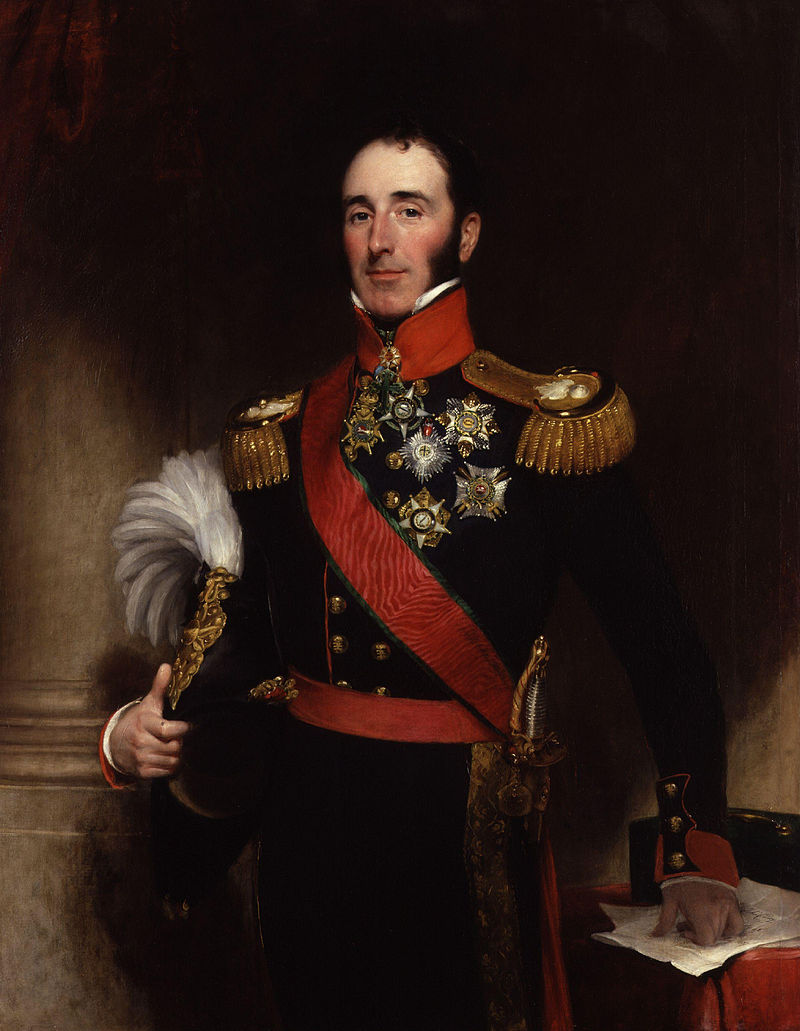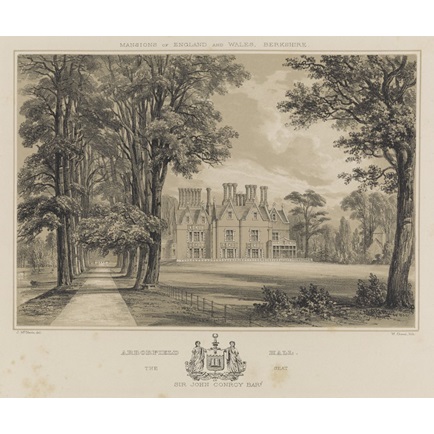by Susan Flantzer
© Unofficial Royalty 2018

Sir John Conroy, 1st Baronet of Llanbrynmair; Credit – Wikipedia
Sir John Conroy, 1st Baronet of Llanbrynmair was Equerry to Queen Victoria’s father The Duke of Kent from 1817 – 1820, and Comptroller and Private Secretary to Queen Victoria’s mother The Duchess of Kent from 1820 – 1839.
John Ponsonby Conroy was born on October 21, 1786, in Maes-y-Castell, Caerhun, Caernarvonshire, Wales, one of six children of John Ponsonby Conroy, a barrister, and Margaret Wilson. Both of Conroy’s parents came from Ireland. Conroy was privately educated by tutors.
When he was 17 years old, Conroy was commissioned a Second Lieutenant in the Royal Artillery and was soon promoted to First Lieutenant. In 1805, he enrolled in the Royal Military Academy, Woolwich which was a military academy for the training of commissioned officers of the Royal Artillery. Conroy served in the British army during the Napoleonic Wars although he had a knack for avoiding battle which caused him to lose the respect of the other officers.
On December 26, 1808, Conroy married Elizabeth Fisher, the daughter of Major-General Benjamin Fisher. The couple had six children:
- Sir Edward Conroy, 2nd Baronet (1809 – 1869), married Lady Alice Parsons; their only child was the analytical chemist Sir John Conroy, 3rd Baronet
- Elizabeth Conroy (1811 – 1855)
- Arthur Conroy (1813 – 1817)
- Stephen Conroy (1815 – 1841)
- Henry Conroy (1817 – 1890)
- Victoria Conroy, known as Victoire (1819 – 1866), married Sir Wyndham Edward Hanmer, 4th Baronet
Conroy served under his father-in-law, performing various administrative duties, and was promoted to Captain in 1817. Through the influence of his wife’s uncle Dr. John Fisher, Bishop of Salisbury who had served as a tutor for King George III’s son Prince Edward, Duke of Kent, Conroy was appointed the Duke of Kent’s Equerry in 1817. In 1818, the Duke of Kent, along with several of his brothers, married in an attempt to provide an heir to the throne after the death in childbirth of Princess Charlotte of Wales, King George III’s only legitimate grandchild. The Duke of Kent’s bride was Princess Victoria of Saxe-Coburg-Saalfeld, the widow of Emich Karl, 2nd Prince of Leiningen.
After their marriage, the Duke and Duchess of Kent moved to Germany, where the cost of living was cheaper. Victoria became pregnant and the Duke and Duchess were determined to have their child born in England. The very efficient John Conroy arranged for the Duke and Duchess’ speedy return to England in time for the birth of their first and only child, Princess Alexandrina Victoria of Kent, the future Queen Victoria, on May 24, 1819, at Kensington Palace in London.
In early January 1820, the Duke of Kent caught a cold but insisted on taking a walk out in the chilly weather. Within days, the cold worsened, and he became feverish and delirious and developed pneumonia. His condition was aggravated by the bleeding and cupping of his physician. The Duke became increasingly weaker and died on January 23, 1820, just six days before his father, King George III died. With the death of her father and her grandfather, little Drina, as she was called, was third in the line of succession after her uncles, Frederick, Duke of York (who would die in 1827) and William, Duke of Clarence (who would succeed his brother King George IV as King William IV. His niece Victoria would eventually succeed him.)
The Duke of Kent died deep in debt. Conroy had been named the executor of the Duke of Kent’s will. With the Duke of Kent’s death, Conroy would lose his position as Equerry. He needed to find another source of income so he offered his services as comptroller to the widowed Duchess of Kent and her daughter. The Duchess of Kent developed a very close relationship with Conroy who wanted to use his position with the mother of the future queen to obtain power and influence. Conroy and the Duchess tried to control and influence Victoria with their Kensington System, a strict and elaborate set of rules. The Duchess’ relationship with her daughter Victoria suffered greatly and did not normalize until Victoria herself had children.
Conroy’s children were among the few companions Princess Victoria was allowed. His youngest daughter Victoire, a few months younger than Victoria, often spent time with Princess Victoria. Princess Victoria was aware of Victoire’s inferior social rank and disliked her. She suspected that Victoire reported her activities to her father. Victoria was also aware that Conroy intended her to reward Victoire and her sister Jane with positions once she became queen.
In 1827, Frederick, Duke of York died making Princess Victoria the second in the line of succession after her uncle William, Duke of Clarence. Three years, later King George IV died and was succeeded by his brother King William IV. Victoria was now the heir presumptive. King William IV intensely disliked the Duchess of Kent and Conroy and vowed to live until Victoria was 18 years old to avoid a regency.
In 1835, Victoria became seriously ill with typhoid fever. While she was ill, the Duchess of Kent and Conroy unsuccessfully tried to force her into signing a document that would have appointed Conroy her personal secretary upon her accession to the throne. This incident motivated Victoria to become even more self-reliant. On May 24, 1837, Victoria turned 18 years old and it would not be necessary for the Duchess of Kent to serve as regent, much to the relief of Victoria’s uncle King William IV. Less than a month later, on June 20, 1837, King William IV died and Victoria acceded to the British throne.
When Victoria became Queen, she immediately dismissed Conroy from her household but she could not dismiss him from her mother’s household. However, she sent both her mother and Conroy off to a distant wing of the palace and cut off personal contact with them. On July 7, 1837, Queen Victoria created Conroy the 1st Baronet of Llanbrynmair with the understanding that he would not show himself at court in return. The title became extinct on the death of Sir John Conroy, 3rd Baronet in 1900. Conroy was finally persuaded by Arthur Wellesley, 1st Duke of Wellington to leave the Duchess of Kent’s household in 1839.

Arborfield Hall; Credit – Wikipedia
After a stay in continental Europe, Conroy bought Arborfield Hall, near Reading, Berkshire, England in 1842. He became a gentleman farmer and won prizes for pig breeding. On March 2, 1854, Sir John Conroy, 1st Baronet of Llanbrynmair died, aged 67, at his home Arborfield Hall, in substantial debt. After his death, the Duchess of Kent finally agreed to have her financial accounts audited and acknowledged that significant funds were missing. She admitted that Conroy had swindled her and at the same time hurt her relationship with her daughter for his own benefit.
This article is the intellectual property of Unofficial Royalty and is NOT TO BE COPIED, EDITED, OR POSTED IN ANY FORM ON ANOTHER WEBSITE under any circumstances. It is permissible to use a link that directs to Unofficial Royalty.
Recommended Book – Serving Queen Victoria: Life in the Royal Household by Kate Hubbard
